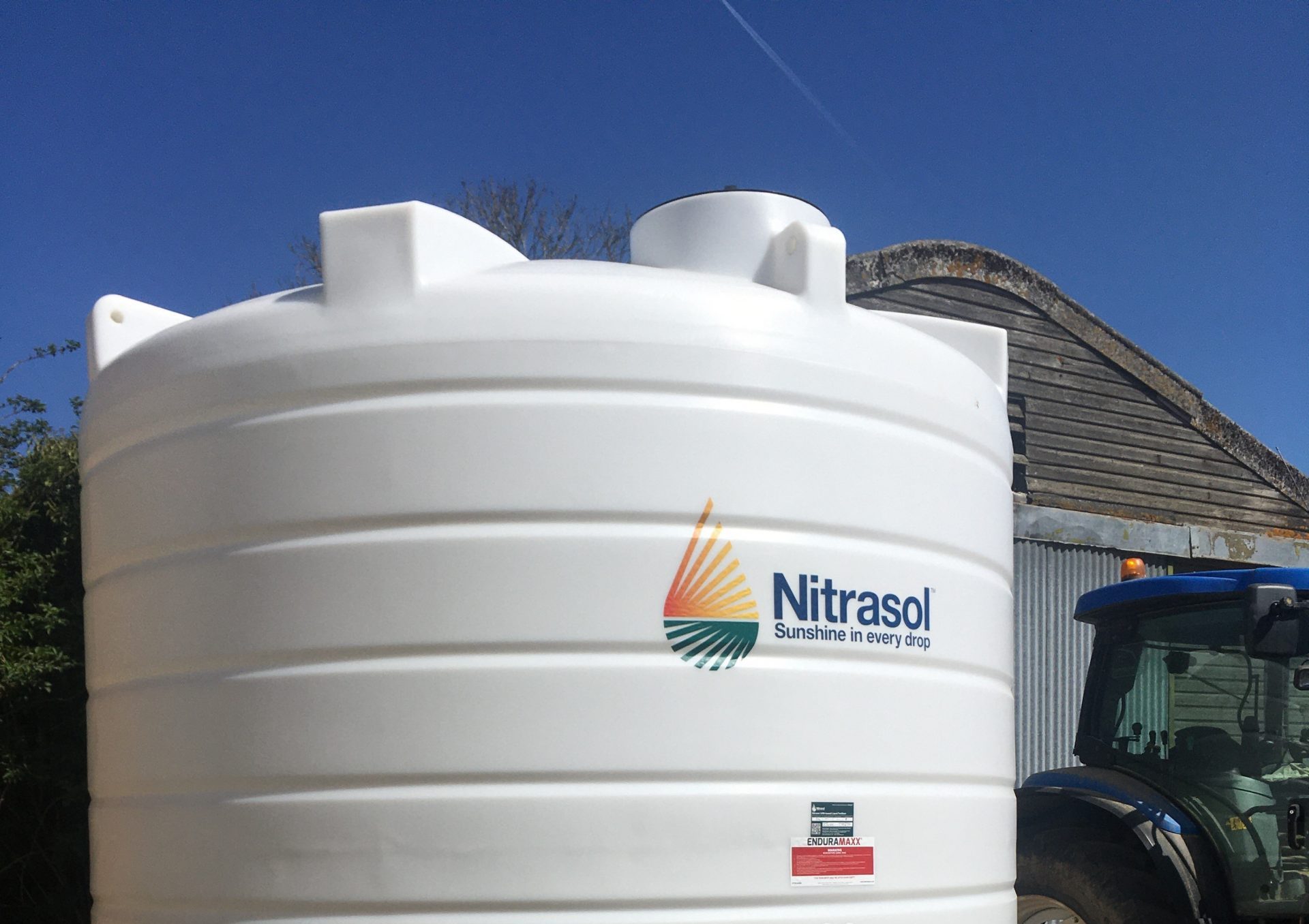Solid to liquid nitrogen fertiliser conversions in the UK have been on the steady rise in the last 20 years and we are now seeing bigger farming operations and a greater emphasis on precision application and time management. The increase in liquid fertiliser us is picking up even more now as farmers look for efficient crop nutrition solutions.
Sometimes the decision to change to liquid is driven by the purchase of a new sprayer and a move to wider tramlines. We also see AF Members making the switch to improve their farm’s operational efficiency. Moving to liquid frees up shed space where granular fertiliser would normally be stored, enables early forward buying opportunities and also ensures precision applications.
We spoke with three AF Changemakers about their switch from granular to liquid fertiliser. A recurring message from all three was their conviction that they made the right decision in moving to liquid fertiliser.
In the first of this series of interviews, we speak with AF Member Pilgrim Farming Limited.
If you are interested in making the switch or would like to discuss the benefits call your AF Fertiliser team on 01603 881 916 or email fertiliser@af.farm.
1. Pilgrim Farming Limited
I am James Woodhouse and am involved in a joint venture farming business with Mark Fletcher called Pilgrim Farming Limited.
We contract farm whole-farm contracts for seven clients. The largest of our clients is actually my landlord, the Walsingham Estate Farming Ltd.
We farm about 4000 acres of productive arable land plus another 1000 acres of stewardship and grassland.
What has been the main driver for change?
When we bought a self-propelled sprayer and took on some extra land, it seemed sensible to look at moving to liquid fertiliser. We wanted to make better use of the sprayer functions such as variable rate application.
From a storage point of view, liquid fertiliser is much easier for storage. Moving solid fertiliser around is a bit of a headache and can be quite expensive. We liked the idea that it would reduce the waste plastic and need for recycling this too. There’s also the safety element of not needing to have large quantities of ammonium nitrate on farm, which is quite dangerous stuff. It poses a fire risk too and when storing large quantities you have to report it to the fire service, so not having as much is another benefit.
It also meant that we didn’t need to buy another fertiliser spreader.
Describe the main steps you are taking?
We started with two 30,000 litre capacity tanks, one either end of the estate. We then took on some extra land so we’ve now got a third tank so we’ve got 90,000 litres of storage.
We’re using liquid fertiliser mainly for the first application when we use sulphur as well.
We use Brineflow liquid fertiliser which is 22% liquid nitrogen and 12% sulphur. On Walsingham Estate, we are using liquid fertiliser for the first two wheat dressings, the first winter barley dressing and the first spring barley dressing. On the oil seed rape, we put all three dressings on as liquid because of the extra sulphur.
The timing works well for us and our self-propelled sprayer because we don’t really get busy spraying pesticides until early April. By by that time all those liquid fertiliser dressings are done. And then we tend to use solid for the remainder.
I find with Brineflow we get a very good service at delivery. We have one driver who’s allocated to us which is extremely convenient.
What are the results of the changes you have made?
Agriculturally I think we get a better crop uptake of the fertiliser, particularly at dry times. One of the other benefits is that you don’t have to worry quite so much about wind so application can be done on windier days than you could with a disc spreader.
Drizzle doesn’t matter either, whereas you can’t apply solid fertiliser when there is moisture in the air. So it’s increasing our application window.
As far as the actual yield is concerned, I think it’s difficult to tell because we’re doing a bit of both solid and liquid fertiliser. The results that we are seeing are more around ease of use.
We haven’t actually mixed any pesticide in with liquid fertiliser as of yet which is a possible saving that can be made if one is careful.
Our operator is very good at washing down daily, but if he wasn’t we would possibly see a higher incidence of problems such as rust and seized up parts. But I don’t think that’s any different to a disc spreader really.
How has AF helped you?
All our clients are AF Members and all the inputs go through AF.
When we were looking to start using liquid, initially we spoke with the AF Fertiliser team. They took us through the different suppliers and the tanks that we would need.
For us, Brineflow worked out to be the best supplier. They are based in the area, supplied the tanks and providing that we had a certain amount of fills per year, there was no charge for these.
This year we agreed to buy two thirds of our liquid fertiliser volume up front which worked out considerably cheaper. AF knew roughly what volume we were going to need so they proactively called me. That worked very well for us.
When we need the fertiliser, I ring AF to arrange.
We try to order in whole lorry loads to save on haulage costs and we only use Nitrosol. We don’t need to use different blends so it keeps it simple.
What’s next?
We are looking at increasing our volume of liquid next year to include another farm where we are carting solid fertiliser about 10 miles by road. So we’re looking at increasing our sprayer capacity so we can do that.
And possibly changing our second sprayer to one that could apply liquid fertiliser as well. Then we’d just run one disc spreader.




